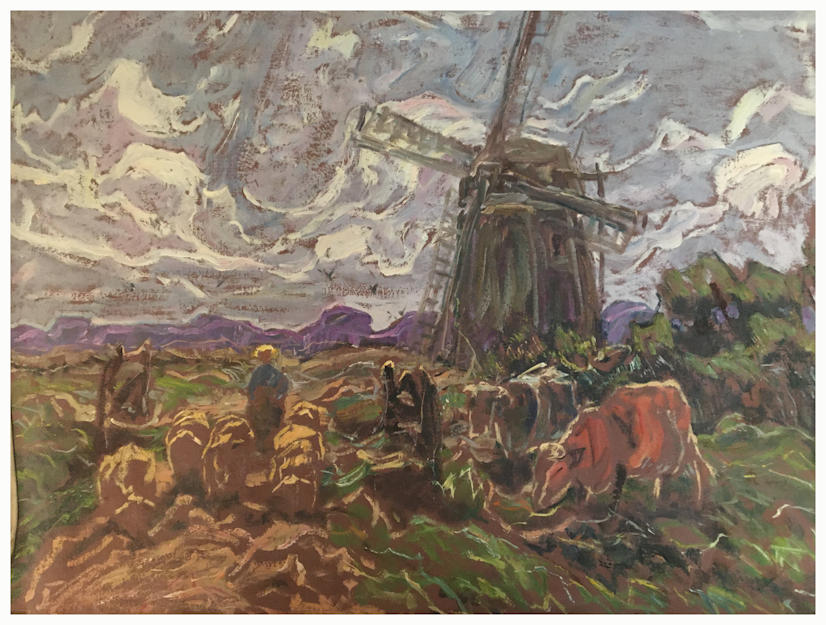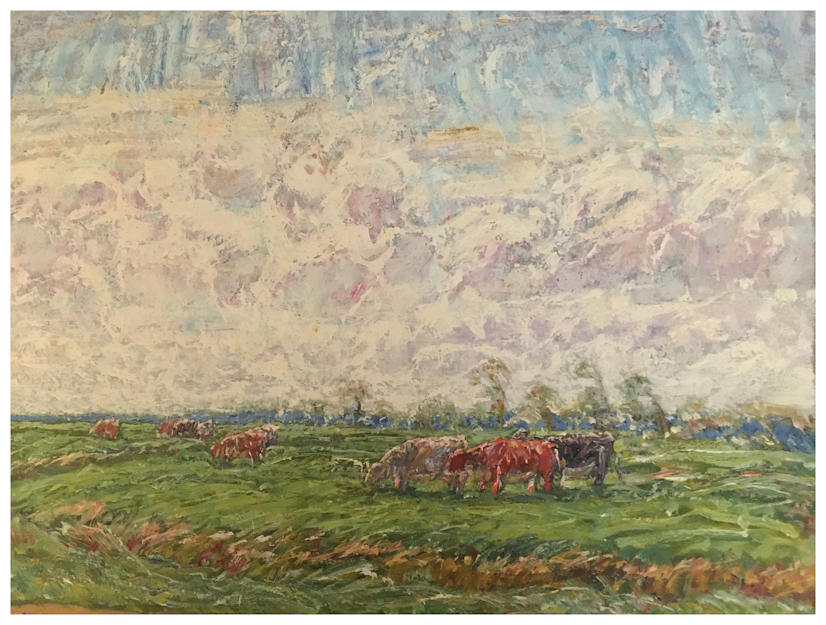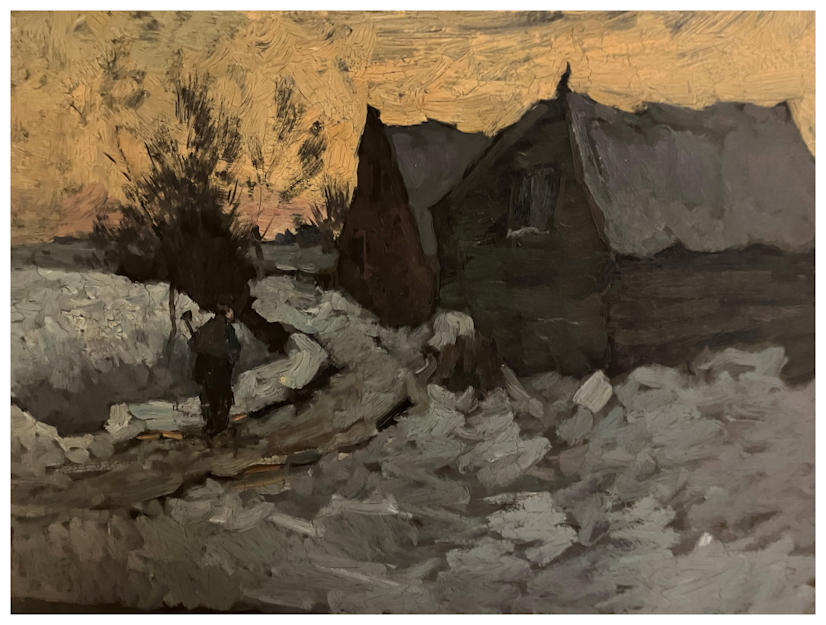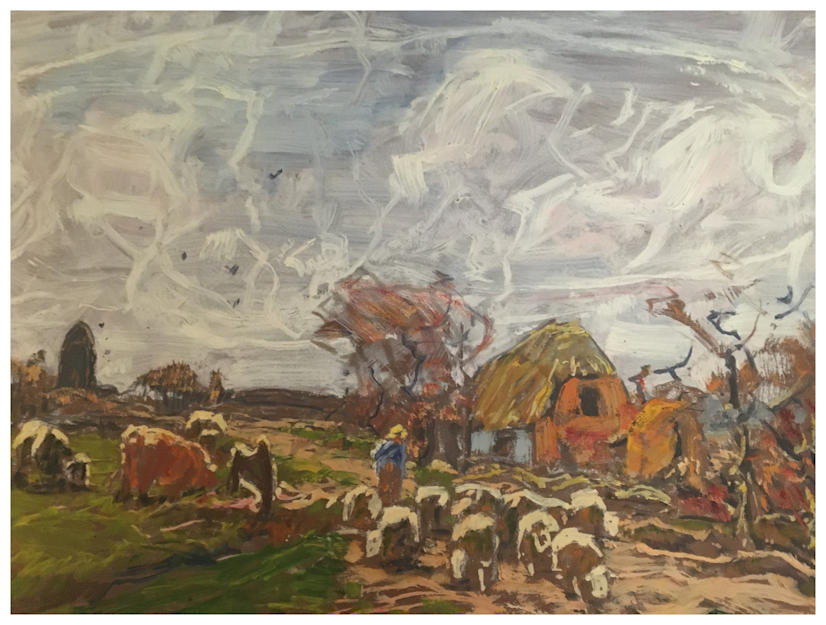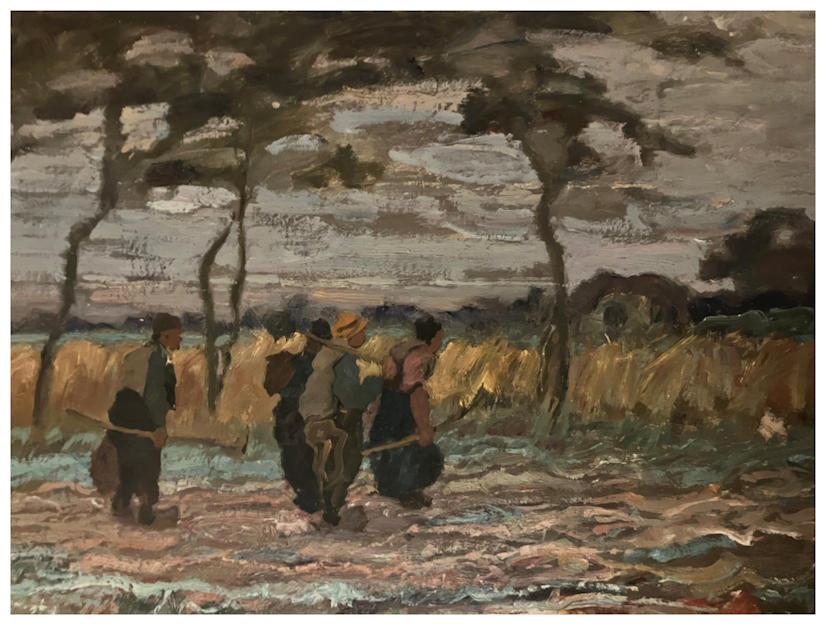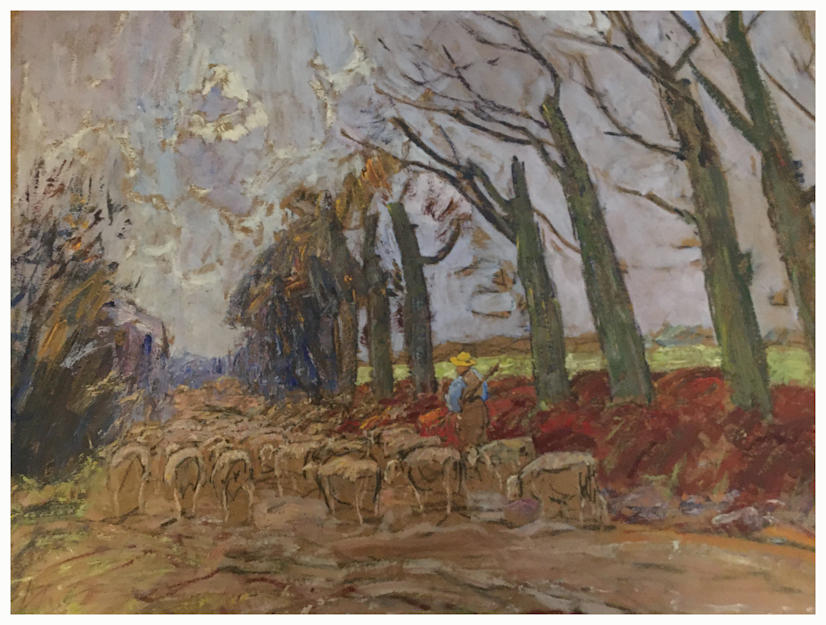Artistic Rejection: Beyond the Hague School
During de Jong's time in Laren, he became acquainted with the work of French impressionists. He abandoned his focus on realism, choosing to
portray his subjects in more abstract ways. According to his daughter, Maria, de Jong stopped exhibiting for several years
until "he found his way to a lighter, more colorful palette."
de Jong's movement toward Impressionism was in direct conflict with the Hague School style. His daughter, Maria, describes the reaction by de Jong's artistic
contemporaries:
"The Hague School, sticking to its old ideals, never forgave him for this. The Pulchri Studio refused [to display] his works in the new touch..."
It is unclear when this break occurred; however, by the 1890s, other second generation Hague School artists were abandoning the greyish tones of the traditional Hague School.
Their palette became lighter and brighter and the brush strokes looser. For example,
Josef Israëls' son Isaac broke with the conventions of his father and other Hague group members by depicting carefree holiday-makers at the seaside resort of Scheveningen, where he often spent summers with his father.
source
de Jong took the rejection personally and deeply. Between 1890 and his death in 1932, de Jong kept his membership with the Pulchri Studio, but remained isolated from other artists and from displaying his work. It must be noted, however, that others
were also rejected by the Pulchri Studio, but went on to acclaim. In 1882,
Van Gogh submitted to the Pulchri Studio, but the works were not acceptable. The paintings are now considered masterpieces.
source
The Hague School officially ended in 1905, never really moving beyond its original focus. The second generation moved toward Amsterdam Impressionism, and
Laren artists moved towards Impressionism and Cubism.
de Jong's introversion moved towards mistrust, hypochrondria, and reclusion, even to the point where he refused to admit anybody to his studio. This is in stark contrast to the
purpose of Pulchri Studio, which was to share ideas with other artists.
Most of The Hague masters had died by 1910. de Jong never established relationships with the second generation of artists, with the possible exception of Zwart, whose painting was found in de Jong's studio.
Despite being a recluse, de Jong married in 1905 at the age of 45 and moved to Haarlem. He and his wife, Lena, had two children, a son and daughter. As an adult, his son left for the Dutch East Indies and died in a Japanese prisoner of war camp in 1945. His daughter, Maria, remembered her father as extremely difficult to live with. In 1948, after both her parents had died, Maria moved to San Francisco to pursue a career as a concert pianist. She brought with her more than 120 paintings, along with numerous sketches, displaying some, and keeping the remainder in packing crates. After her death, the paintings were gifted to Maria's cousin, Emma Usinger. Her children have displayed some of the paintings in their homes and now work to establish de Jong firmly in the history of accomplished Dutch artists.
These questions remain:
- Would de Jong's art have been recognized if he had been socially skilled... or had advocates such as van Gogh's brother and sister-in-law?
- What would have happened if the 2nd generation of The Hague artists had bonded and worked collaboratively?
- In many ways, The Hague School's fame was created by its strict methods and standards. Yet the same strategy made it impossible to adapt to the times. Was rejecting de Jong's art the smart decision for The Hague?
Below, see some examples of de Jong's work while in Haarlem.
|

